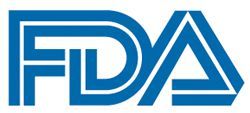News
Article
FDA Approves Vorasidenib for IDH1/2+ Grade 2 Astrocytoma or Oligodendroglioma
Author(s):
The FDA has approved vorasidenib for grade 2 astrocytoma or oligodendroglioma with a susceptible IDH1 or IDH2 mutation.
FDA

The FDA has approved vorasidenib (Voranigo) for the treatment of adult and pediatric patients 12 years of age and older with grade 2 astrocytoma or oligodendroglioma with a susceptible IDH1 or IDH2 mutation, following surgery including biopsy, sub-total resection, or gross total resection.1
The regulatory decision was supported by data from the phase 3 INDIGO trial (NCT04164901), which showed that at a median follow-up of 14.0 months (interquartile range [IQR], 10.1-17.9) for the vorasidenib group and 14.3 months (IQR, 10.0-18.1) for the placebo group, the median progression-free survival (PFS) was 27.7 months (95% CI, 17.0–not estimated) for patients treated with vorasidenib (n = 168) vs 11.1 months (95% CI, 11.0-13.7) for those given placebo (n = 163; HR, 0.39; 95% CI, 0.27-0.56; P < .001).1,2
“Today’s approval of [vorasidenib] is an enormous leap forward in cancer care, and a defining moment for people living with grade 2 IDH-mutant glioma,” Arjun H. Prasad, chief commercial officer at Servier Pharmaceuticals, stated in a news release.3 “[Vorasidenib], which is the first breakthrough in this specific disease area in nearly 25 years, offers patients unprecedented improvement in PFS. We are proud to deliver this first-of-its-kind therapy to patients in need, and we remain committed to bringing innovative targeted therapies to people with cancer.”
The international, double-blind, randomized, placebo-controlled INDIGO trial enrolled patients at least 12 years of age with residual or recurrent, histologically confirmed grade 2 oligodendroglioma or astrocytoma per WHO 2016 criteria who harbored centrally confirmed IDH1 or IDH2 mutations. Mutation variants included were IDH1 R132H, R132C, R132G, R132S, or R132L, and IDH2 R172K, R172M, R172W, R172S, or R172G.2
Other key inclusion criteria included a Karnofsky performance status of at least 80; at least 1 prior surgery, with the most recent occurring between 1 and 5 years before randomization; no other anticancer treatment for glioma; no treatment with glucocorticoids for signs or symptoms of glioma; consideration for a watch-and-wait approach; and adequate hepatic and renal function.
Patients were randomly assigned to receive 40 mg of vorasidenib or matching placebo once per day in 28-day cycles. Treatment continued until disease progression or unacceptable toxicity, or until another anticancer therapy was indicated at investigator discretion.
Blinded independent review–assessed PFS per RANO-LGG criteria served as the trial's primary end point. Secondary end points included time to next therapy (TTNT), objective response rate, safety, tumor growth rate, health-related quality of life, and overall survival.
Additional data published in the New England Journal of Medicine showed that the median TTNT was not reached for the vorasidenib arm vs 17.8 months for the placebo arm (HR, 0.26; 95% CI, 0.15-0.43; P < .0001). In the vorasidenib arm, 85.6% (95% CI, 77.8%-90.8%) of patients were alive and did not require a next treatment at 18 months compared with 47.4% (95% CI, 35.8%-58.2%) of patients in the placebo arm. At 24 months, these respective rates were 83.4% (95% CI, 74.0%-89.6%) and 27.0% (95% CI, 7.9%-50.8%).
Additionally, 11.3% of patients in the vorasidenib arm received subsequent anticancer therapy, including surgery, chemotherapy, or radiation therapy. This rate was 35.6% in the placebo arm, including 31.9% of patients who crossed over to receive vorasidenib.
Regarding safety, 94.6% of patients in the experimental arm experienced any-grade adverse effects (AEs) compared with 93.3% of patients in the placebo arm. The rates of grade 3 or higher AEs were 22.8% and 13.5%, respectively.
The most common any-grade AEs included increased alanine aminotransferase (vorasidenib, 38.9%; placebo, 14.7%), increased aspartate aminotransferase (28.7%; 8.0%), increased gamma-glutamyltransferase (15.6%; 4.9%), COVID-19 (32.9%; 28.8%), fatigue (32.3%; 31.9%), headache (26.9%; 27.0%), diarrhea (24.6%; 16.6%), nausea (21.6%; 22.7%), dizziness (15.0%; 16.0%), seizure (13.8%; 11.7%), and constipation (12.6%; 12.3%).
Serious AEs related to treatment occurred in 1.8% of patients in the vorasidenib arm vs no patients in the placebo arm. In the vorasidenib group, the rates of AEs that led to treatment discontinuation, dose reductions, and dose interruptions were 6.3%, 10.8%, and 29.9%, respectively. These respective rates were 1.2%, 3.1%, and 22.7% in the placebo group.
References
- FDA approves vorasidenib for Grade 2 astrocytoma or oligodendroglioma with a susceptible IDH1 or IDH2 mutation. FDA. August 6, 2024. Accessed August 6, 2024. https://www.fda.gov/drugs/resources-information-approved-drugs/fda-approves-vorasidenib-grade-2-astrocytoma-or-oligodendroglioma-susceptible-idh1-or-idh2-mutation
- Mellinghoff IK, van den Bent MJ, Blumenthal DT, et al. Vorasidenib in IDH1- or IDH2-mutant low-grade glioma. N Engl J Med. 2023;389(7):589-601. doi:10.1056/NEJMoa2304194
- Servier’s Voranigo (vorasidenib) tablets receives FDA approval as first targeted therapy for grade 2 IDH-mutant glioma. News release. Servier Pharmaceuticals. August 6, 2024. Accessed August 6, 2024. https://servier.us/blog/serviers-voranigo-vorasidenib-tablets-receives-fda-approval-as-first-targeted-therapy-for-grade-2-idh-mutant-glioma/









